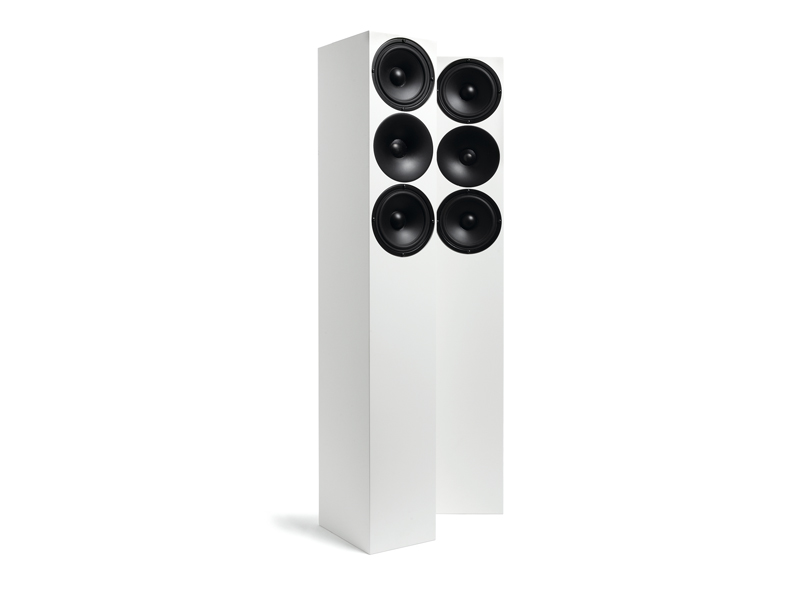TechRadar Verdict
Elegant floorstander cleverly uses a waveguide to improve coherence. It could be smoother with deeper bass, but the sound is warm, lively and essentially neutral, with superior musical communication skills
Pros
- +
Elegant styling
- +
Lively and warm sound
- +
Excellent musical communication
Cons
- -
Bass could be a bit punchier
Why you can trust TechRadar
The new Amphion Helium 520 speaker is very similar to the Prio we tested from the company at the beginning of the year, but carries a much lower pricetag of £1,000 per pair.
Indeed, the only obvious difference lies in the grille treatment.
Twin bass/mid drivers are mounted above and below the tweeter, in the configuration named after Joseph d'Appolito. And because these are relatively small 130mm units, with 100mm flared paper cones, the speakers themselves are remarkably slim.
The main drivers operate in parallel, so their combined acoustic centres effectively coincide with the location of the tweeter.
Enclosure details
The tweeter is a 25mm metal dome affair, but it's mounted back down the throat of a 'waveguide' – a species of horn but with a truncated throat and a very wide flare.
This has several benefits: it allows the crossover point to be lowered (to around 1.6kHz); it helps match the acoustic sizes of the bass/mid and the treble drivers; and by recessing the tweeter, its potential time alignment with the two cone units is improved.
Sign up for breaking news, reviews, opinion, top tech deals, and more.
The enclosure comes complete with a plinth to aid stability and now has much better spiking arrangements than those we found in the Prio. There might be some advantage in tilting this speaker slightly backwards, as best focus will be obtained when the two main drivers are precisely equidistant from the listeners.
A single pair of high-quality terminals is fitted close to the floor, just below the generous rear port; foam bungs are supplied to block the ports if preferred.
Improved coherence
The Prio 520 was impressive enough in its own right, but ironically it's utterly eclipsed by this less costly variation.
The Helium 520 has all the good qualities shown by the Prio, most notably its very superior coherence through the critical crossover and presence regions, but does so with improved smoothness right across the band, including the previously slightly troublesome bass alignment.
The speakers worked well clear of walls and equally satisfactory with the bungs inserted when close to a wall.
Strong imaging
Genuinely deep bass is somewhat restricted, but the overall tonal balance is impressively neutral and the sound has a reassuring warmth through the upper bass and lower midband, the part of the band where many rivals tend to show weakness.
Imaging is precise and tightly focused, capable of delivering decent depth and ambience when this is available from the source material. A mid-1960s Sibelius 5 recording (Maazel/VPO on Decca) demonstrated this beautifully, with the brass at the back of the orchestra clearly operating in a genuine and convincing acoustic space.
This is a truly exceptional and clever speaker, offering a rare combination of warmth, neutrality, coherence and fine imaging. It might not be perfect, but it's about as close as you'll get for £1,000.
